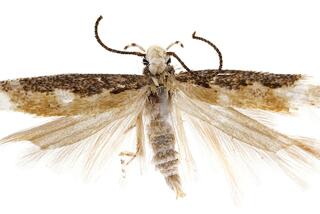GARDENING : The Word Is Out on Challenge of Raising Mums : Competitive cultivation is blooming, especially among retirees with a lot of time on their hands.
A chrysanthemum by any other name would still be queen of the fall garden--and mums do have a relatively new official name.
Several years ago the Geneva-based International Botanical Congress renamed the flower. It replaced Chrysanthemum x morifolium with Dendranthema x grandiflora-- but it isn’t likely the name will catch on quickly.
However, chrysanthemum-growing is blooming in the United States. The 1,500-member National Chrysanthemum Society, founded in 1944, boasts 45 chapters throughout the country and foreign members correspond from India, Poland, Russia, New Zealand, Australia and Estonia.
The society hopes to improve the flower’s standard of excellence, promote an even wider interest in its cultivation and teach propagation techniques. Owing to the time-consuming nature of chrysanthemum cultivation, most members are retirees.
“People--men as well as women--are drawn to the versatility of chrysanthemums and to the competitive element that seems to go with their cultivation,” said Galen Goss, NCS secretary for the past eight years.
He said the variety of colors and forms is broad enough to accommodate many tastes and the creativity inherent in producing spectacular blooms tends to bring out the showoff in even the most self-possessed gardener.
Chrysanthemums were first cultivated in China as a flowering herb and were widely revered throughout Asia. Every part of the plant was valued. The boiled roots were believed to cure headaches; the petals contributed a gourmet touch to salads, and the brewed leaves turned an ordinary tea party into a festive occasion.
“If you want to be happy for a lifetime,” says an old Chinese proverb, “grow chrysanthemums.”
In ancient Japan, only emperors and senior nobility could legally raise the plant and use its image on family crests and seals.
Centuries passed before the popular Asian plant gained recognition in Europe. It wasn’t until 1753 that mums even had a name. That year Swedish botanist Linnaeus combined “Chrysos,” from the Greek for gold, and “anthemon,” for flower.
Around the same time, mums crossed the Atlantic and made their debut in America, introduced by John Stevens, a New Jersey horticulturist.
“Raising mums can be very scientific,” Goss said. “You’ve got to precisely time everything you do--from disbudding to feeding--to make sure the flower doesn’t peak before the annual fall show. You can pretty much forget going away for the weekend, if your aim is to grow a prize-winning mum.”
Because each of the 7,000 or more chrysanthemum cultivars has its own special needs, experts advise novices and seasoned growers alike to study the culture notes outlined in catalogues or available at nurseries that sell mums.






